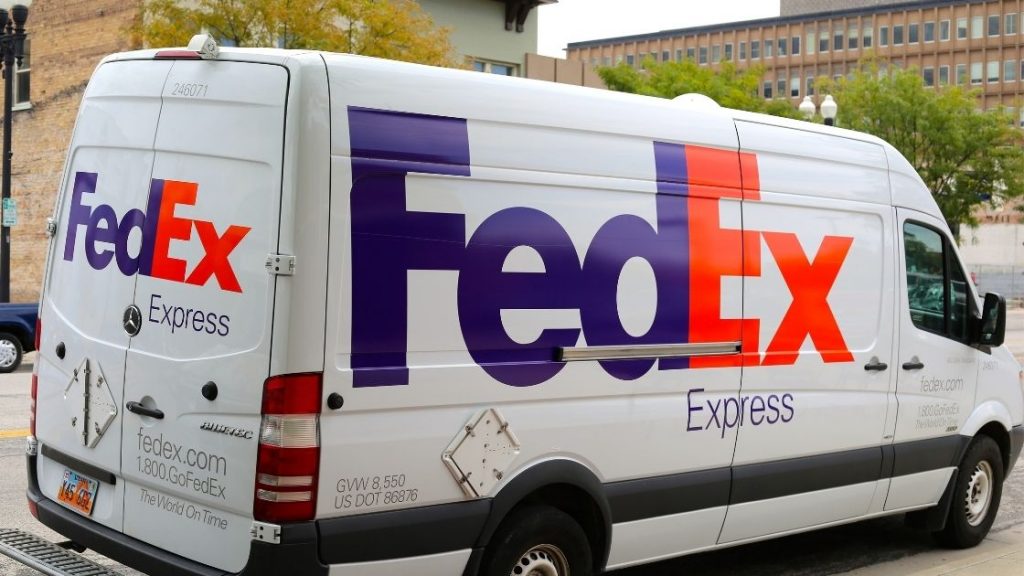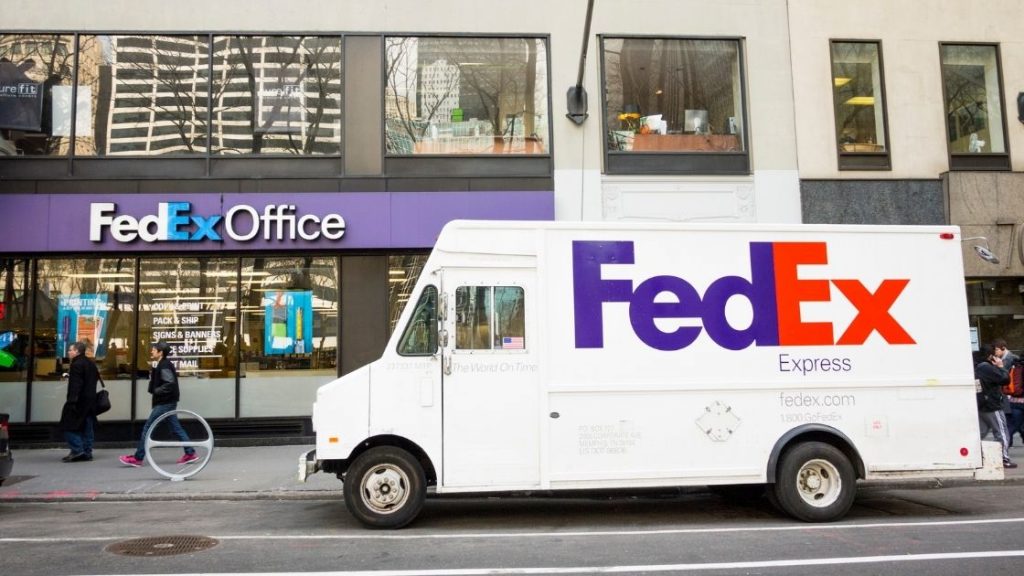If you are interested in starting a trucking business with one truck but don’t know where to begin, you are in the right place.
In this article, I will cover 6 essential steps to setting up a trucking business beginning with just a single truck. Now one of the key questions is what type of truck you want to get. There are three main options: semi-truck, box truck or cargo van. We will cover each of them in this article because the cost, complexity and operations are dramatically different depending on what you choose.
Here’s a preview of what we’ll cover (of course, if you want to jump ahead to any of the individual steps, just click on the appropriate hyperlink below).
- Step 1: Establish Your Business
- Step 2: Create a Business Plan For Your Trucking Business
- Step 3: Open Up a Business Checking Account and Credit Card
- Step 4: Obtain Funding
- Step 5: Obtain Licenses, Permits and Insurance
- Step 6: Get Loads for Your Trucking Business
Before we dive into the steps, I will cover some introductory questions you may have about the trucking business, including an overview of the three types of trucks you can get, how much they cost, and whether the trucking business is profitable (including how much you can make for each type of truck).
If you want to skip the introductory stuff and jump ahead to the 6 steps, click here.
This post may contain affiliate links. If you click on a link and complete a transaction, I may make a small commission at no extra cost to you.
The information contained in this post is for informational purposes only. It is not a recommendation to buy or invest, and it is not financial, investment, legal, or tax advice. You should seek the advice of a qualified professional before making any investment or other decisions relating to the topics covered by this article.
What is a Trucking Business?
A trucking business is a business where your trucks deliver materials from one location to another for a fee.
You may be asking if it’s even possible to have a trucking business with a single truck.
It is possible to start a trucking business this way. In fact, many sizable trucking businesses today had humble beginnings. Someone with an entrepreneurial spirit scraped and saved to buy their first truck and just began delivering loads. There are many stories of people like this who began small and wound up controlling dozens or even hundreds of trucks.
There’s no reason you can’t be the next trucking mogul. Or if you don’t want to go that big, just have a single truck, but answer to absolutely no one. That sounds pretty good too!
What Types of Truck Can I Get For My Trucking Company?
There are a number of different types of trucks you can get for your new trucking company, but I have focused on three. Let’s start with the largest and most expensive type of truck first and work down from there.
Semi-Trucks
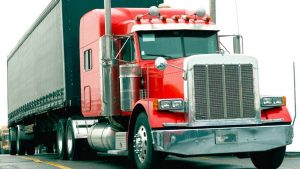
Semi-trucks (also known as 18 wheelers, tractor trailer trucks, or big rigs) or the massive trucks you see on most highways delivering freight across the country. They are the largest, most expensive, and most difficult to operate.
Semi-trucks require a commercial driver’s license (CDL) to drive and are almost exclusively used for long distance deliveries of large loads.
Box Trucks
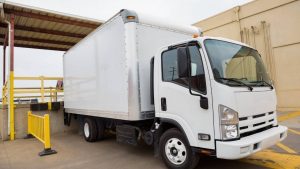
Box trucks (aka straight trucks, box vans or cube vans) are much smaller than semis and far easier to operate.
They consist of a chassis cab truck with an enclosed rectangular cargo area. Box trucks are usually 10–26 feet long and can range from Class 3 to Class 7 (12,500 lb. to 33,000 lb. gross vehicle weight rating). Source.
They often have a garage-like door at the back that rolls up and allows you access to the cargo area.
Unlike a semi, you can operate a box truck (if you choose the right type), without a CDL. They have the perfect blend of cargo space and maneuverability that makes them well-suited to navigating urban areas with relative ease. With the explosion of e-commerce, box trucks have become more and more important for meeting local delivery needs.
Cargo Vans

Finally, you can go with the cheapest and easiest to operate vehicle – the run-of-the mill cargo van. Like box trucks, these vehicles are better suited to deliveries in urban areas. Obviously, they offer less cargo space than a semi-truck with a trailer or a large box truck, but are more usually way more affordable (and basically anyone can drive one).
How Much Does it Cost to Start a Trucking Business with One Truck?
Starting a trucking company can be expensive (even if you start with one truck), but it doesn’t have to be. We’ll show you how you can reduce your starting costs later on in the article.
As you can imagine, the biggest expense in starting your trucking business is your truck. How much you spend on this is going to depend on the type of truck you get, its brand, age, condition, mileage, and various other factors (such as, in the case of semi-trucks, the type of cabin you get, etc.).
Semi-Trucks
A new semi-truck can cost between $130,000 to $200,000 while a used semi-truck can be purchased for as low as $30,000 (but even used trucks can be priced as high as $180,000, depending on the year, make and model). Source
Of course, you can make things a lot more comfortable for yourself (and your drivers) by having trucks with decent sleeping quarters built-in. These are referred to as sleeper cabs or sleeper berths. They will be more expensive (ranging from $230k to $300k new), but may be worth it.
Check out my article on sleeper cabs here if you want to learn more.
If you are short on cash, but still want to start a trucking business, there are options. Check out my article on how to start a trucking company with no money.
Box Trucks
If you buy a new box truck, you can wind up paying between $25,000 to $45,000 for a light duty class 2 or 3 truck, but the larger you go, the more you will need to pay.
Below is a breakdown of new box truck costs by size.
| Box Truck Size | Box Truck Price Range |
| Light duty class 2 and 3 | $25,000-$45,000 |
| Medium duty class 4 | $35,000-$50,000 |
| Medium duty class 5 | $45,000-$70,000 |
| Medium duty class 6 | $50,000-$90,000 |
Of course, there are far cheaper options.
Used box trucks can come with steep discounts. One with 200,000 miles can go for as little as $5,000 – $10,000. Lower-mileage examples will cost more (between $10,000 – $40,000) depending on age, mileage and condition. Source.
Cargo Vans
According to Truecar, new cargo vans can cost from $25,000-$35,000. Source
Like semis and box trucks, buying a used cargo van is going to save you a lot of money. Used cargo vans on Edmunds start as low as $2,500 (although I also saw some that ran well over $50,000 – for almost-new Mercedes cargo vans).
How to Reduce Your Starting Costs:
There are two basic strategies for lowering your initial costs: get financing or lease your vehicle. Fortunately, there are plenty of options for both of these strategies.
Although your long-term costs will be likely be cheaper if you finance the vehicle, leasing can be attractive option too because it allows you to expand pretty rapidly. Why? Each new vehicle in your fleet won’t require as much money when compared with buying.
If you want a fuller discussion of how to select your semi-truck, as well as financing options and leasing strategies, check out my article on truck investing.
If you are leaning towards box trucks, check out my article on how to start a box truck business for more info on financing and leasing (or renting) options.
Although obtaining your truck is likely going to be your biggest upfront expense, there are other costs as well. You will also need to spend some money on equipment, accessories, and supplies.
For example, if you buy a semi, you may also want to buy a trailer, which can cost tens of thousands of dollars (with refrigerated trailers running more). Even if you operate a box truck business, you will need a pallet jack, straps and load bars, etc.
Finally, there are miscellaneous expenses as well, such as licenses, permits, insurance, marketing, load board fees, etc. They will be a modest expense when compared to the cost of acquiring your truck, but they can still cost hundreds of dollars or more.
Is a Trucking Business Profitable?
A trucking business can be profitable if managed correctly.
According to CTA Trucking (a long haul transportation company), the average gross of most of their trucks is between $4,000-$10,000+.
They state that an owner operator may take home around $2000-$5000+ weekly. That translates to between $104,000 – $260,000 if you work all 52 weeks.
If you want to operate a box truck business, you can also make decent money.
According to Ziprecruiter, the national average pay for a box truck owner-operator is $110,275 per year, which equals around $53 per hour. But the range can be from as low as $23,500 to as high as $293,000! How much you make will vary based on a lot of factors, including how many loads you deliver, how well you manage your expenses, and where you operate.
For cargo vans, the numbers look pretty good too. The average owner-operator of a cargo van business makes around $65,000 per year, which is well above the national median income. Source
What Types of Trucking Companies Can I Start with a Single Truck?
Now that we know some of the basic financial information associated with the various trucking businesses, it’s time to take a look at what specializations or types of businesses you can operate with your truck. Here’s a high level summary of some of the more popular options.
Note: If you want to learn more options, check out my article on transportation business ideas. In that article, I go into detail on over 30 transportation business ideas (including links to resources where you can get loads, etc.)
Semi-Truck Businesses
Semis are perfect for large loads traveling long distances (although there are plenty of semi-truck operators who do shorter deliveries). So for this type of truck, you will want to look at the following options:
Long Haul Trucking Business (aka “over-the-road” or “OTR” trucking). This business usually handles the transporting freight over 250 miles. Pay tends to be higher.
Short Haul Trucking Business. Deliveries tend to be less than 150 miles. May be easier to recruit drivers because they can come home at night.
Box Truck Businesses
If you want to go the box truck route, there are plenty of options:
Regional Trucking Business. If you own a larger box truck that can handle larger loads, you can run a freight transport business specializing in regional deliveries.
Local Delivery Business. This would be a business specializing in last mile deliveries (i.e. local deliveries).
Moving Business. Perfect if you live in an area that has a decent residential population.
Cargo Van Businesses
Food Delivery. There is no shortage of food delivery demands on most residential areas. Your cargo van business can be perfect for satisfying that demand.
Retail Goods Delivery. Similar to box trucks, you can start a local delivery business with a cargo van. Although a cargo can typically has less space, it’s still big enough to handle most local deliveries.
Moving Business. Although not as versatile as a box truck when it comes to moving, you can use your cargo van to deliver smaller pieces of furniture and equipment for residents and local businesses.
Deliver Flowers. I used to own a florist, so I know the need for good delivery drivers. Cargo vans are perfect for this task.
Ok, now that we’ve covered the introductory stuff, let’s dive into the details on how you can start your trucking business.
Step 1: Establish Your Trucking Company
Select Your Business Name and Logo
The first step in establishing your trucking business is selecting a name and logo that you like. If you want inspiration, try Shopify’s business name generator. It’s free.
As for a logo, you can go on canva.com and check out some of their logo templates and start from there. It’s also free option, but you will need to customize the logo templates to your liking.
Or you can just go on Fiverr and hire someone to create your logo for like $5.
For more great strategies and tips on how to select the right name and logo for your business, check out my full article on the topic: How to Choose a Company Name and Logo [16 Key Strategies and Tips].
Create a Website For Your Trucking Business
Don’t neglect this step. Your business needs a website, period. Especially if you are going to be offering services to the general public (e.g., offering local moving services, etc.)
Your website doesn’t have to be incredibly fancy or cost a lot of money to set up. There are a lot of resources available to help you with this.
In fact, Google allows you to build your first business profile website for free.
List Your Trucking Business So Customers Can Find You
It is also important to get your fledgling business on Google. You can do this by listing it on Google My Business. This way, people who are searching for a trucking business in your local area can find you.
If you want to learn more about how to do this, check out this tutorial from Google.
Set Up Your Business Entity
You may want to set up a business entity like an LLC, corporation, or partnership for your trucking company. Why do this? In most cases, setting up a business entity can help shield some of your assets held outside the business entity if there is a claim against the business.
If you want to make the investment of setting up a corporation, LLC, or some other business entity, you can hire a lawyer to help you, or you can use many of the online resources that can help you set up your business entity. For a handy table comparing the different types of business entities, check out my ultimate guide to starting a business.
I like Northwest because they can get you up and running quickly and easily. They are also one of the most affordable options that I was able to find that still offered great customer service ($39 as of the date of this article).
According to their website, they are the only national registered agent service that lets you use their office address so you don’t have to use your own. That’s a killer privacy advantage.
Definitely worth checking out.

Step 2: Create a Business Plan For Your Trucking Company
A business plan is essentially a roadmap for your trucking business.
It organizes your thoughts relating to your business into an actionable plan. Some things to include in your trucking company’s business plan are budgeting, identifying your target market and competition, marketing strategy (how will you get loads), pricing strategy, operational plans (will you have drivers, etc.), and growth projections.
Don’t stress too much about getting your business plan perfect. I would use it more as an organizational tool at this point. You can polish it up later if you need to.
Don’t know how to get started? The Small Business Administration has a great tool to help you write your business plan.
Step 3: Open Up a Business Checking Account and Credit Card
You should open a dedicated checking account in the name of your trucking business. It will give your business credibility, help keep things organized and tidy at tax time, and keep personal and business expenses separate.
If you don’t know where to get started, check out Novo.
They are perfect for new small businesses because they offer no monthly fees or minimum balances, and give you unlimited ATM fee refunds. On top of that, they give you access to tons of other free perks, like major discounts on places like Stripe, Quickbooks and Google Ads.
In my opinion, they are one of the best options in the market.

Now, let’s turn to business credit cards. Credit cards can be really helpful to a new trucking business, especially if an expensive repair pops up!
First, they are often easier to qualify for than a line of credit, especially when you are a brand new business. Even if you don’t need to use it right away, it’s nice to have the funds available in a pinch. Second, it’s a great way to build your business credit rating, which will come in handy if you need to apply for a loan in the future to expand your business, etc.
Finally, you get to enjoy the benefits of points, cash back or other rewards that may come with having a business credit card. However, just like your business checking account, avoid intermingling business expenses with personal expenses on your credit card.
Step 4: Obtain Funding

As we covered already, starting a trucking business can be costly, especially if you plan on buying a new truck.
Fortunately, as we discussed, there are a lot of financing options available (as well as leasing options).
That being said, you will still need some money to get started.
Want some ideas on how to get that seed money? Check out these options:
- Personal savings. You will often need some skin in the game before lenders will work with you, so having some personal savings is important.
- Credit Cards. Due to high interest rates, credit cards are probably not an ideal choice, but if you can snag a 0% teaser rate on a credit card, you can put some of the start-up costs onto that card at a ultra low interest rate (at least until the teaser rate period expires). Try to get one that lasts at least a year so you have some time to get your business off the ground.
- Friends and family. Although these people may be willing to lending you money, you have to weigh that against the risk of souring your relationship with them if things go sideways.
- Banks. Banks are a traditional source of funding for new businesses, but they will often conduct extensive due diligence and underwriting before lending to a brand new enterprise.
- Online Funding. This includes includes getting a loan using peer-to-peer lending, funding through kickstarter campaigns, using online lenders, etc.
Step 5: Obtain Licenses, Permits and Insurance
As we already covered, you will need a CDL if you operate a semi. But that’s not all.
If you want your own trucking authority (which you will need if you operate a semi and want to engage in interstate transport), you will need to apply to the Federal Motor Carrier Safety Administration (FMCSA) for a Motor Carrier (MC) Number. It costs around $300 and they have a 21 day vetting process.
You will need to make sure you have appropriate insurance in place and file a BOC-3 form, which basically appoints a service of process agent in the states in which you will operate.
You will also need a Unified Carrier Registration (UCR) if you are transporting cargo across state lines. Additionally, if you operate across state lines and meet certain other requirements, you may need a US DOT number and an International Registration Plan (IRP).
If you operate a box truck or cargo van business that is local, things are much simpler. You won’t need many of the licenses and permits discussed above, so that’s definitely something to consider when figuring out what type of business you want to operate.
In many cases, you will also need to get a general business license (which is usually not too expensive or difficult to obtain), but there may be other, more specific, permits or licenses required, depending on where you operate and the scope of activities you plan to engage in.
Finally, you will also need to get appropriate insurance for your trucking business. Depending on the type of vehicle you are operating, you will need different types of insurance. In most cases, a simple Google search of “trucking insurance” coupled with the type of vehicle you are operating should get you started.
Step 6: Get Loads For Your Trucking Business
One of the things you absolutely need to get right is getting consistent and profitable loads. A load is basically a delivery job for your truck.
So how do you do this?
Here are some practical strategies to get consistent loads.
Load Boards
One of the most common methods for getting loads is signing up for load boards. These are generally online boards that list loads for delivery that you can access. Many (but not all) charge a fee to use them.
The leading load board out there is DAT.
Because of their huge size and scope, they also have leading edge tech and info, including unlimited searching, instant alarm match notifications, broker credit scores and days to pay, market rates, mileage routing and much more.
I have an affiliate relationship with them and secured a deal where if you use my link, you can get a free 30 day trial with full access to their network and features. So, you get to try out the leading load board for a full month for free. I would note that this deal is only for new subscribers.
If you are interested, just click below to take advantage of this no-risk offer.
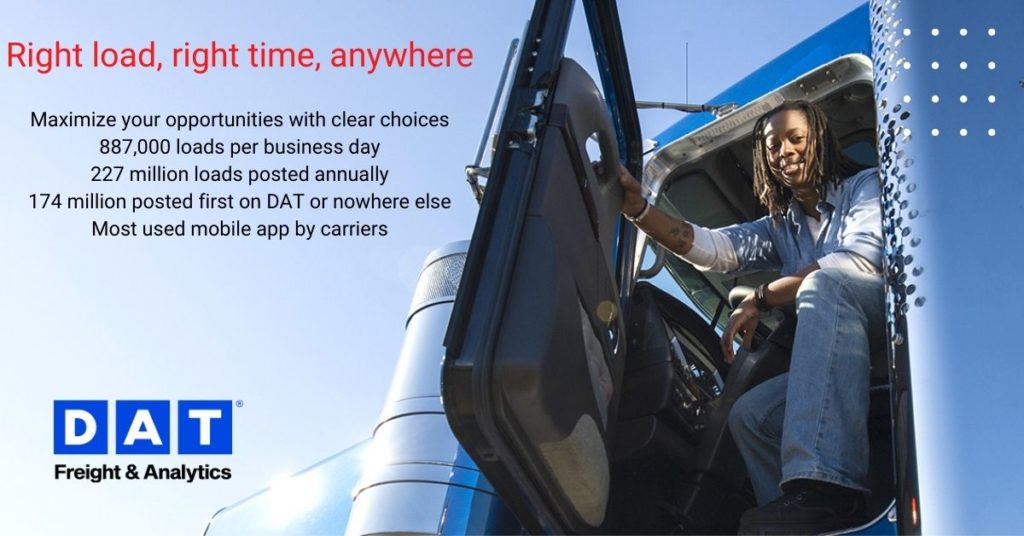
Other load boards include Truck Stop, Get Loaded, and Trucker Path.
You can also contact freight brokers, 3PL companies and freight forwarders as well to see if they have loads available for you.
Do Moving Jobs with Your Truck
Obviously, if you want to specialize in the moving business, you will need to market your business accordingly. As we discussed earlier, get your business online and make your presence known within the local marketplace.
Rent Out Your Truck to Movers
Another way to make money (without even doing a load yourself) is renting out your truck to people who need it. You can rent to transport companies, or even local movers who may need an extra truck for the day.
If you want to explore this topic in more detail, including learning what sites you can use to list your truck for rent, check out my full article on How to Rent Out Your Truck For Profit.
Ultimately, you want to experiment with various strategies – you may be surprised at what works best.
Conclusion
So there you have it – 6 steps to starting a successful trucking business with just one truck.
Hope this has been helpful. If you want to learn how to make passive income in the trucking business, check out my article on trucking investing for passive income. We cover three different ways to do this, with some pretty unconventional ideas. I think you will find it an interesting read.
